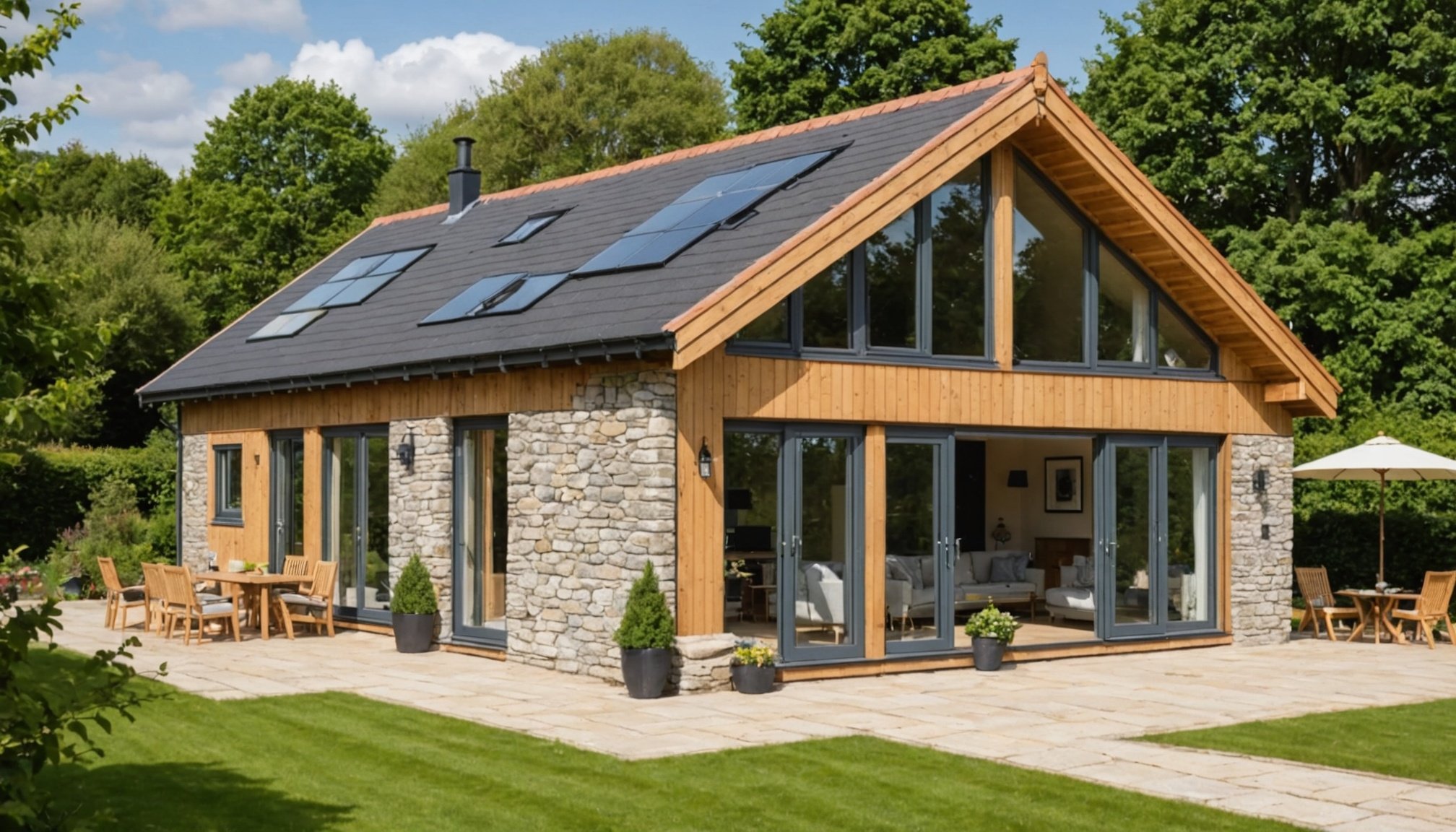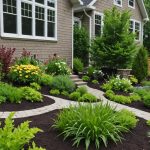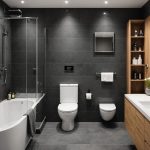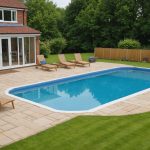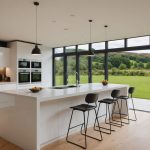Top Eco-Friendly Insulation Solutions for Your UK Cottage: A Comprehensive Guide
When it comes to making your UK cottage more energy-efficient and eco-friendly, one of the most critical aspects to consider is insulation. Proper insulation not only reduces your energy bills and carbon footprint but also enhances the comfort and value of your home. Here’s a detailed guide to help you navigate the top eco-friendly insulation solutions available for your timber frame or traditional cottage.
Understanding the Importance of Insulation
Insulation is the backbone of energy efficiency in any home. It prevents heat loss in the winter and heat gain in the summer, ensuring your house remains comfortable while minimizing energy consumption. Here are some key considerations to keep in mind:
Sujet a lire : Creating a Secure Play Space in Your UK Garden: Mastering Uneven Terrain Solutions
Energy Efficiency
Insulation plays a crucial role in reducing energy consumption. According to GreenMatch, roof insulation alone can prevent up to 25% of heat loss in your home, saving you up to £230 annually and reducing your carbon footprint by 0.6 tonnes.
Thermal Comfort
Proper insulation maintains an even internal temperature, making your home more comfortable. Natural insulations like woodfibre and recycled cellulose add thermal mass, which helps in regulating the internal temperature and improving sound performance.
Sujet a lire : Creating a Stunning Living Wall in Your UK Home: Tips for Low Natural Light Environments
Environmental Impact
Eco-friendly insulation materials are not only better for the environment but also contribute to net zero targets. For instance, Oakwrights’ WrightWall Natural uses blown cellulose made from recycled newspapers, which is treated against insect infestation and fireproofed.
Eco-Friendly Insulation Materials
Choosing the right insulation material is paramount. Here are some of the top eco-friendly options available:
Natural Fibre Insulations
- Woodfibre Insulation: This is a highly breathable material that captures carbon and contributes to net zero targets. It provides greater density than standard products, adding thermal mass and improving sound performance.
- Cellulose Insulation: Made from recycled paper, cellulose is biodegradable and costs around £11 per m². It is an excellent choice for those looking for sustainable and high-performance insulation.
Sustainable Synthetic Insulations
- Sheep Wool Insulation: This is a renewable and biodegradable material that costs about £19.75 per m². It is an excellent thermal insulator and can be used in various parts of the house, including underfloors and lofts.
Advanced Eco-Friendly Panels
- Ecologic SIPs: These structural insulated panels feature recyclable EPS insulation and achieve U-values as low as 0.11 W/m²K for roofs and 0.18 W/m²K for walls. They use an I-joist spline for more continuous insulation.
Insulation Solutions for Timber Frame Homes
Timber frame homes offer unique opportunities for advanced insulation solutions:
WrightWall Natural
- This system by Oakwrights features a 240mm core of either Warmcel or woodfibre insulation. It includes a neoprene gasket and Siga tapes for airtightness, ensuring high-performance insulation. This system has met rigorous Passivhaus standards and was used in the UK’s first certified oak frame Passivhaus home.
Frame Technologies’ TechVantage
- These systems accept natural and breathable insulations, such as woodfibre, and are designed to achieve U-values down to 0.10 W/m²K. They are ideal for those looking to use lower-carbon materials in their self-build projects.
Insulation for Traditional and Period Homes
For traditional and period homes, the challenge is to maintain the original aesthetic while improving energy efficiency.
Secondary Glazing
- Mitchell & Dickinson’s CosyGlazing is a bespoke secondary glazing system that preserves original window features while reducing heat loss and draughts. It creates an insulated air gap that is almost as effective as double glazing without the need to replace the windows.
Specialist Insulation Solutions
- For listed and period properties, Mitchell & Dickinson offers tailored insulation solutions, including high-quality draught proofing and specialist sheep’s wool insulation for underfloors, sloping ceilings, and lofts. These solutions are designed to restore the original period features and aesthetics of the home.
Cost and Practical Considerations
When deciding on insulation, cost and practicality are crucial factors:
Cost Comparison
Here is a comparison of the costs of different insulation materials:
| Material | Cost per m² | Sustainability | Thermal Performance |
|---|---|---|---|
| Fibreglass | £10 | Low | Good |
| Polyisocyanurate (PIR) | £12.50 | Medium | Excellent |
| Cellulose | £11 | High | Excellent |
| Sheep Wool | £19.75 | High | Excellent |
| Spray Foam | £55-£70 | Low | Superior |
Installation and Labour Costs
- The total cost of insulation also includes labour costs. For example, fibreglass is the cheapest option but may require professional installation, while spray foam, although more expensive, offers superior insulation and airtightness.
FAQs Answered
Here are some frequently asked questions about eco-friendly insulation solutions:
What is the most eco-friendly insulation material?
- Natural fibre insulations like woodfibre and cellulose are highly eco-friendly as they are breathable, capture carbon, and contribute to net zero targets.
How long does it take for insulation to pay for itself?
- Roof insulation, for instance, can pay for itself within 3 to 4 years through energy savings. Homes with little insulation can save between £180 and £475 annually.
Can I install insulation myself?
- Yes, you can install some types of insulation yourself, such as fibreglass, to save on labour costs. However, it is recommended to hire professionals for more complex installations to ensure they meet building regulations.
Practical Tips and Examples
Here are some practical tips and examples to help you make the most of your insulation project:
Choose Sustainable Materials
- Opt for materials like bamboo, cork, recycled glass, and paper for your interior design. These materials not only reduce your environmental impact but also add unique character to your home.
Upgrade Your Windows
- Upgrading to uPVC double glazing can enhance both the energy efficiency and the appearance of your home. This is a significant project but offers huge rewards in terms of energy savings and comfort.
Transform Your Garden
- A well-designed garden can reduce your energy consumption by encouraging you to spend more time outdoors. This not only promotes energy savings but also improves the overall look of your home.
Insulating your UK cottage is a crucial step towards making it more energy-efficient and eco-friendly. Whether you are building a new timber frame home or retrofitting an old period property, there are numerous eco-friendly insulation solutions available. By choosing the right materials, considering the cost and practicality, and following practical tips, you can ensure your home is not only comfortable but also sustainable.
As Tim from Oakwrights notes, “Many people we work with are moving towards more natural options, such as recycled cellulose and woodfibre. These create a breathable wall system that will capture carbon, contributing towards net zero targets.”
By investing in eco-friendly insulation, you are not only enhancing your home’s energy efficiency but also contributing to a more sustainable future. So, take the first step today and make your cottage a warmer, more sustainable haven.

